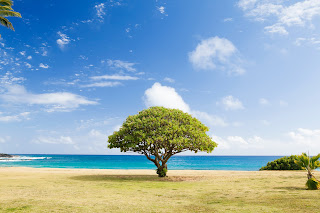What I learned so far about Fish in Karatsu
I'm amazed by the fish in Karatsu.
Recently the best I had was aji horse mackerel.
May~June is the best season to eat the fish, and when you grill it, the fat from the fish gives a perfect browning.
When you become more and more experienced, just by filleting the fish you are able to tell whether the fish will taste good or not.
We just had iwashi sardines which is also seasonal. The ones from Chiba tastes amazing during the monsoon period (now) But actually, today we had both from Chiba and from Karatsu and the ones from Karatsu were in better condition.
Of course, because where it was fished is very close to where it's sold. It's also easier to maintain in good condition when it is sold right after it's caught instead of traveling all across Japan from Chiba to Karatsu.
4 main reasons why Karatsu fish are so delicious.
Karatsu fish are seafood caught in the Genkai region of Saga Prefecture (Karatsu City, Imari City, and Genkai Town), and are known as a brand of fish that is very fresh and high quality.
There are mainly 4 reasons why Karatsu fish are so delicious.
- It is caught in one of Japan's best fishing grounds
- Fish are handled carefully using a specialized fishing method
- High freshness and high quality are maintained thanks to the discerning market and middlemen
- There are stores in Saga Prefecture that are particular about their ingredients and specialize in Karatsu fish
First, the Genkai region of Saga Prefecture, where Karatsu fish are caught, is an area where many kinds of seafood are caught due to the influence of the Tsushima Warm Current that flows offshore.
The coast in particular has a ria coastline, and nutrients for the forest are supplied through many rivers.
Karatsu Bay for example connects with Matsuura River that brings in nutrients from the mountains. Even in the city center where the Karatsu castle is, you can fish numerous fishes like suzuki seabass, halibut, whiting, and anago conger eel.
Fishing method is smaller scale
Second, Fish are handled carefully using a specialized fishing method.
I learned that avoiding stress to the fish directly affects the taste of the fish.
In this region, relatively small-scale fishing methods are popular, so each fish can be handled carefully and caught without damaging or stressing the body. This careful handling is used in a variety of fishing methods, so many types of seafood are shipped fresh and with quality.
The distance from the port to the market is shorter
Third, freshness and quality are maintained due to the distance of the market and the middlemen.
The Saga Genkai Fisheries Cooperative Fish Market, which handles a lot of Karatsu fish, is located very close to the city center of Karatsu City.
Therefore, it's easier for many of the middlemen who handle the fish to maintain the quality. The fish can be kept alive, and even the slaughtering process can be done right before eating.
The fish can't really be fresher.
The alliance of the restaurants to keep the quality
Saga Prefecture certified the restaurants that are particular about their ingredients and specialize in Karatsu fish.
Saga Prefecture has established a system to certify restaurants, retail stores, and hotels that provide Karatsu fish.
By going to these eateries, it's easier to find places that serve quality fish dishes.
I actually work in a few of the stores that are on this list, and am totally blown away with the slaughtering techniques and its particular ways of maintaining the fish.
The variety of the fish are amazing
What I want to do: Sustainability
- Kameyama Sengyo for the kaisendon with great value
- Genyo for the sashimi platter prepared from live squid, arranged in its original shape
- Umakamon Ichiba ("delicious market" in Saga Dialect) for variety of seafood sold
Come join me on the journey at Karatsu.
I moved into Karatsu on March, 2025 from the variety of fish it has.
But I want to try to work with the local businesses and the government to show you hints of the samurai town.
It has great traditional content that is interesting, but it's still hidden.
It will be my pleasure to show you the charms of the samurai city as an experience that we all can learn from to better our lives.
- If you are a foodie you must come to Karatsu!
- 【Which to Go】Traditional Edomae Sushi or Conveyer Belt Sushi?
- What I learned in Tsukiji: Why you should go.
Where to stay in Karatsu:
松 Higher Class: Yoyokaku, Mizuno Ryokan竹 Middle: Karatsu Seaside Hotel, Mercure Saga Karatsu ResortApartment style with kitchen: Hotel Nine States Karatsu
Where to eat in Karatsu:
What to do in Karatsu:
- Karatsu Ware x Sake Tasting experience
- Squid Sashimi making at Yobuko Morning Market
- Pottery experience at Nakano Tochigama Kiln
For other experiences in Karatsu, go to the Karatsu City Tourism Website.
- Karatsu Ware x Sake Tasting experience
- Squid Sashimi making at Yobuko Morning Market
- Pottery experience at Nakano Tochigama Kiln





Comments
Post a Comment